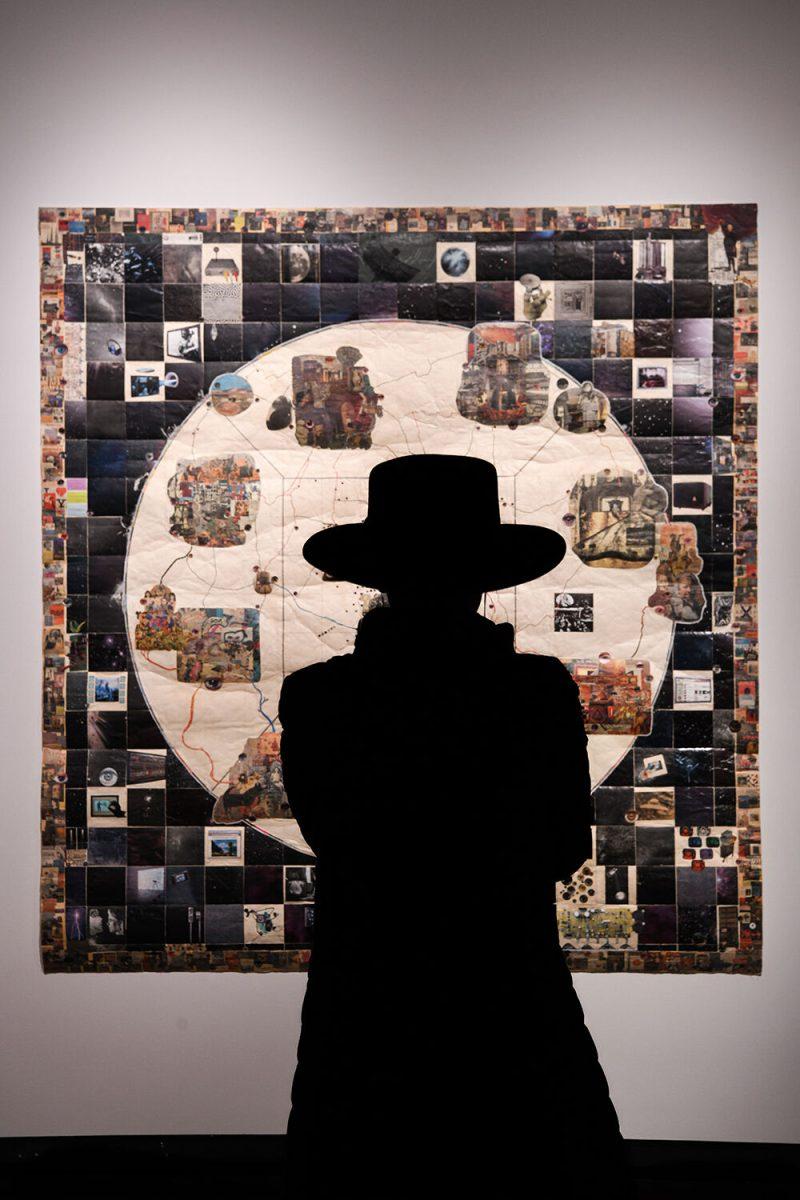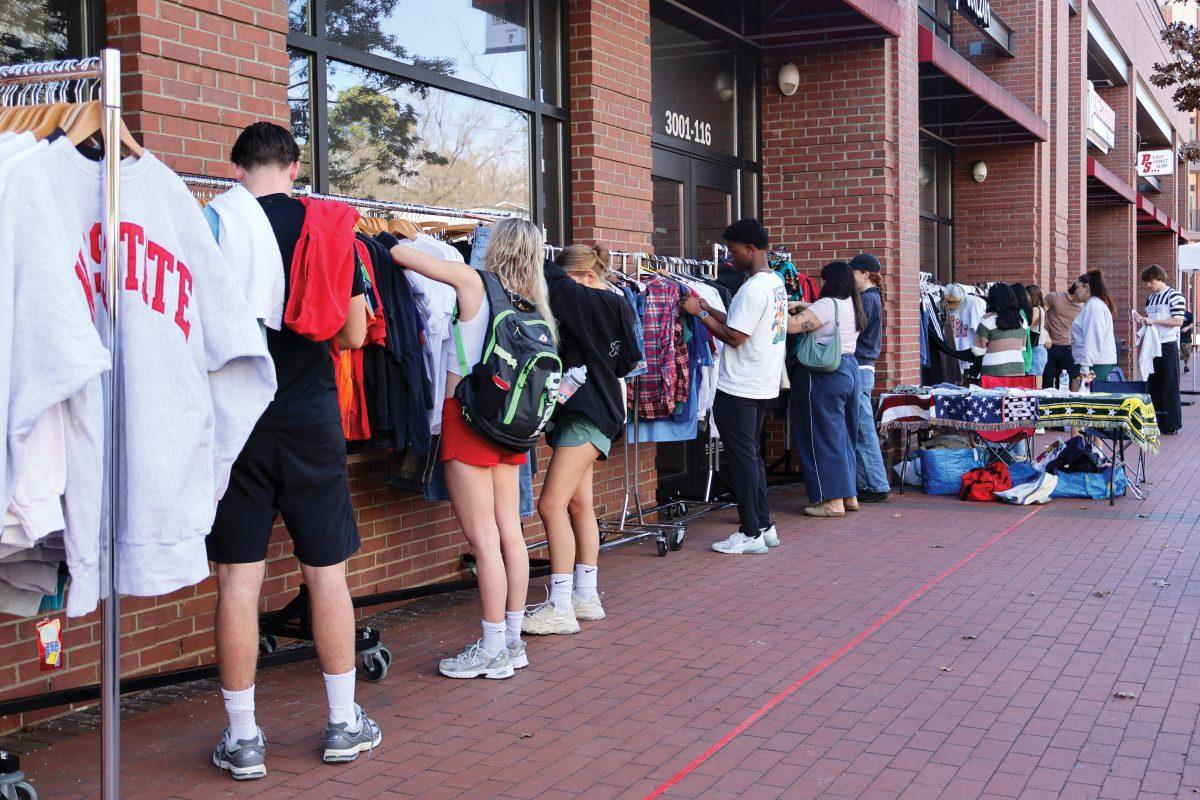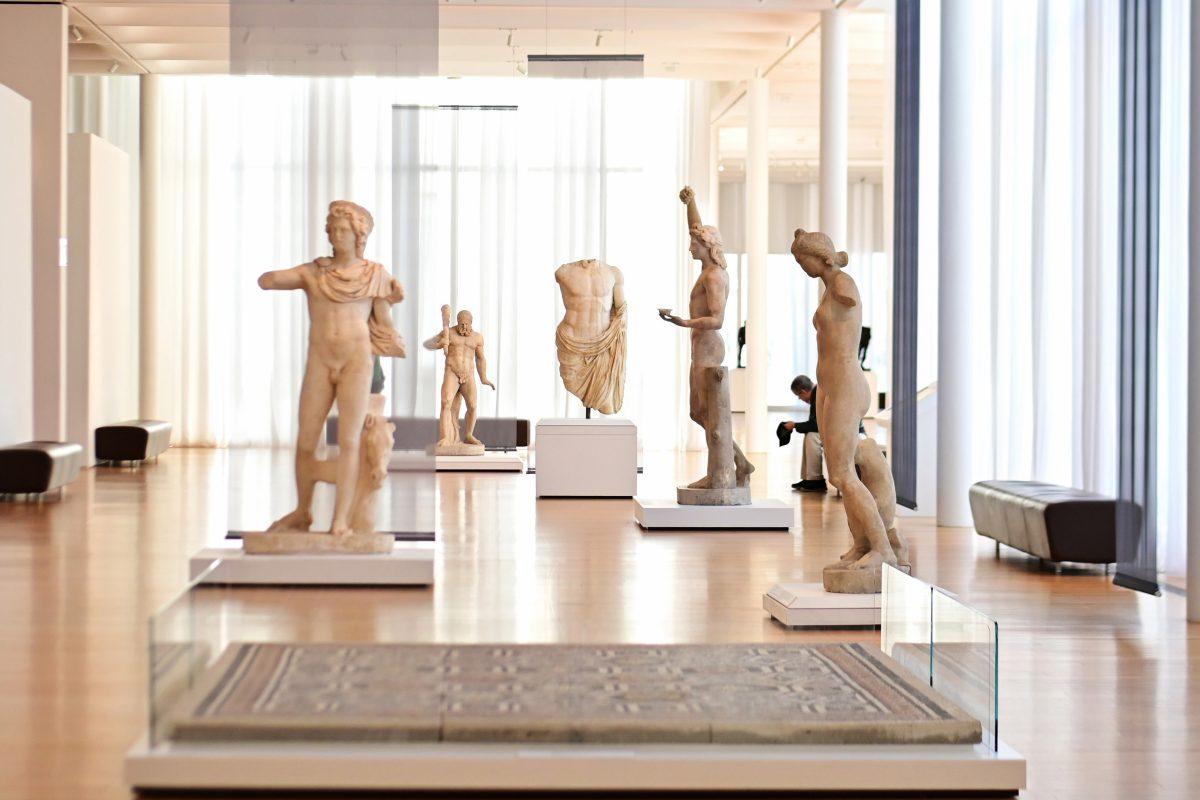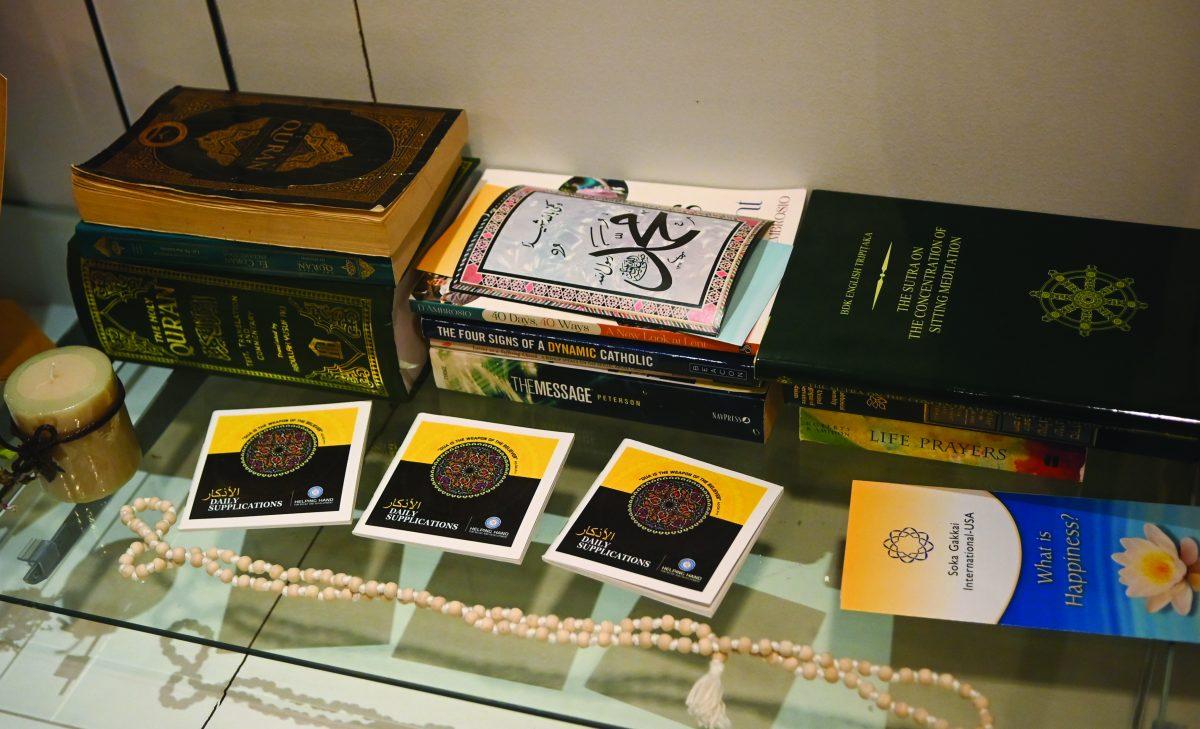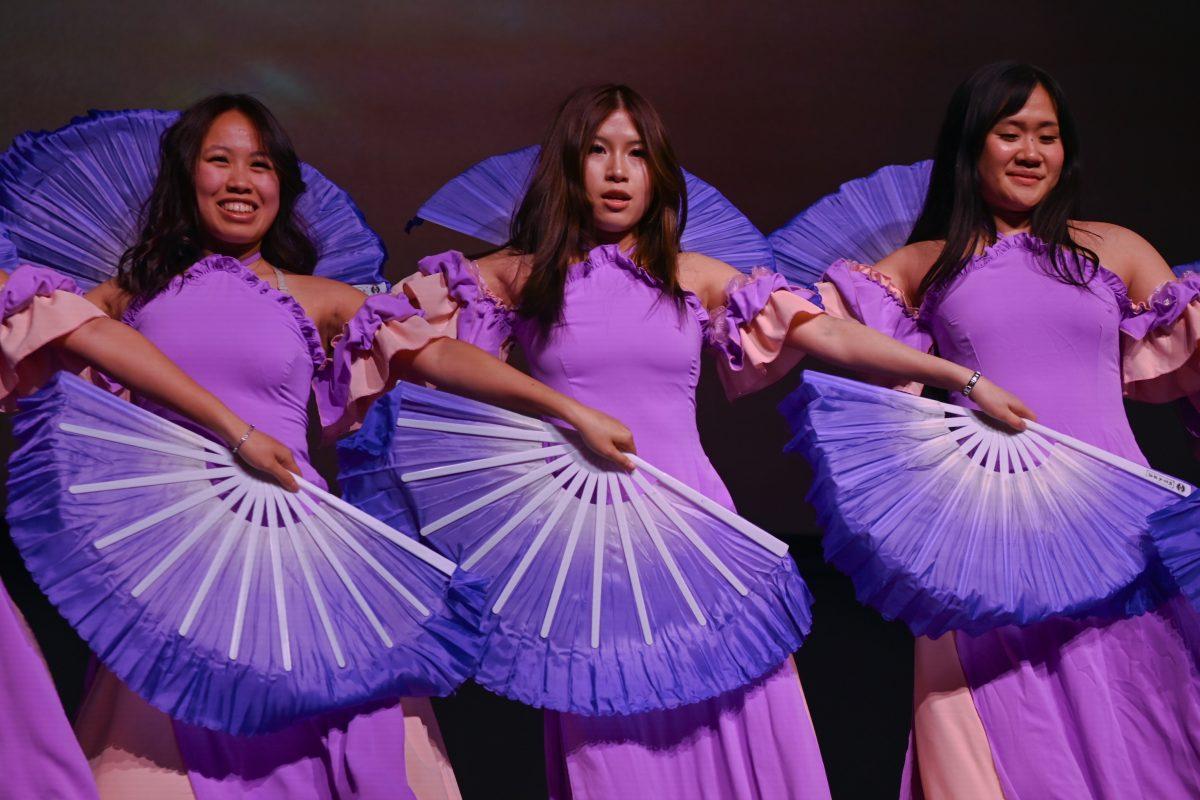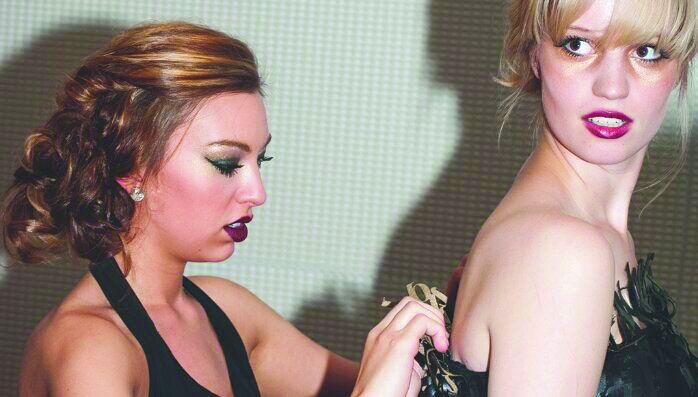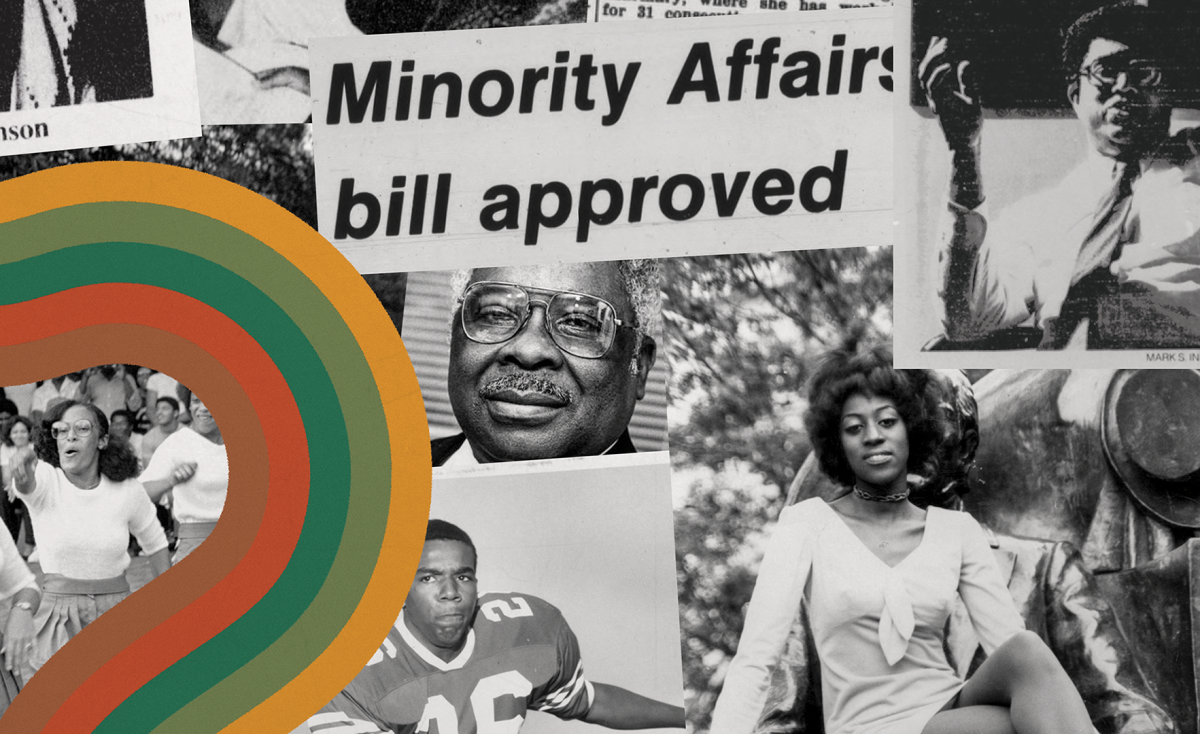The Gregg Museum of Art and Design was crowded and buzzing Thursday night for the opening reception of the museum’s spring exhibits, “This is Not: Aldwyth in Retrospect” and “True Likeness,” complete with live music from a United Strings of Color trio, food and street poems by the Poetry Fox.
“This is Not: Aldwyth in Retrospect” brings together 70 years worth of mononymous artist Aldwyth’s painting, embroidery, assemblage and collage work. Exhibit curator Mark Sloan said the exhibit was something of a capstone both for Aldwyth and for himself, marking 23 years of the pair’s collaboration.
Aldwyth, who was in attendance, shared her 87 years worth of wit and charm with attendees. When asked what she hoped for students to take away from her work, she said she’d really rather them leave it all where it was, before responding that she hoped her work was encouraging.
“If that old lady can do it, anybody can do it,” Aldwyth said. “You know, anybody who wants to make art, just start with something. … I mean, you know, you don’t make a masterpiece the first time, you just keep making things together and each time you make something a little more.”
Though the exhibit spans her life’s work, the most prominent pieces are her more recent massive collages that use abstraction as vehicle for self examination and commentary, as well as simple observation.
“Casablanca” is a diptych — a piece of art made of two matching parts — based on the famous line in the 1942 film by the same name, “Here’s lookin’ at you, kid,” where Aldwyth arranged the eyes of artists across the page to have artists look back at viewers.
“Those are all artists’ eyeballs that had been cut out of books,” Sloan said. “So Picasso and Frida Kahlo, Marcel Duchamp — and [Aldywyth] glued them down, and it’s the art world looking at you, the viewer. … So it’s this reversal. And it’s all in the shape of an oculus. It’s sort of this crazy conceptual, metaphoric, beautiful gesture that she created.”
Another piece, 24 feet long and 42 inches high, was inspired by watching Shakespeare in the Park in New York and recognizing the relevance Shakespeare’s stories still have in the modern day.
“There’d be actors on the stage, and they’d be acting out Shakespeare [from] 1614 or whenever, but she would hear things around her that were spoken in today’s tongue but were still the same issues that the people on the stage and Shakespeare were dealing with,” Sloan said. “It’s like Shakespeare was somehow prescient and saw that humans are humans, no matter what century they live in.”
Sloan said these collages marked some of the best work of her career, capturing what he calls an obsessive attitude toward creating art to convey ideas.
“They’re classic Aldwyth — in that she takes an idea and bores a hole right through it,” Sloan said.
This obsessiveness comes through in the mere scale of the collages, many of which are made up of thousands of minuscule cuttings. Tori Lusik, Aldwyth’s archivist and the curatorial assistant for this exhibition, said the detail is what stands out most about Aldwyth’s work.
“Everything has a purpose,” Lusik said. “Even if that purpose is later determined.”
Sloan met Aldwyth 23 years ago when he heard about her application for a fellowship through the South Carolina Arts Commission. In place of a paper resume, Aldwyth sent a wooden structure displaying all the things that she was not, including “grant recipient.” Though the application was rejected, Sloan sought her out and has been working with her to display her work ever since.
Gregg director Roger Manley said much of Aldwyth’s work, such as this resume, challenges prominent societal institutions, including gender.
“At some point, [she] realized that calling herself her [first] name was holding her back because she thought galleries and museums and grant organizations and all that wouldn’t take her seriously,” Manley said. “So she sort of ditched her first name and just started going by her last name. … So [that] gender wasn’t part of what people would factor in judging your work.”
Aldwyth did not publicly display her work for much of her life, making this exhibition especially touching to her family and loved ones, many of whom were in attendance.
“I just always loved seeing people get to appreciate her art,” said Joe Thomas, Aldwyth’s son. “I kind of grew up seeing it all, but it’s very unique when you see a room full of strangers that are all going piece to piece [to] appreciate a lifetime of creativity. It’s fascinating.”
Manley said Aldwyth’s art is perfect for a college campus because the medium of collage is accessible, avoiding intimidation by emphasizing the ideas and impact of the pieces over technique.
“The goal for the museum is trying to find artworks that students can respond to and [that are] thought provoking, give people ideas for things they might do,” Manley said. “Nothing in this room looks impossible to do. … All she did, really, is cut pieces out of magazines and stick them on the wall, so the process itself is not mysterious. It’s just that what she [made] was kind of remarkable.”
Putting “True Likeness” and “This is Not: Aldwyth in Retrospect” side by side serves to explore identity from several different distances. While Aldwyth’s work represents a lifetime of grappling with individual identity as an artist, “True Likeness” explores the varied definitions of identity. Both center words, objects and experiences constitutive to who a person is.
“This is one artist showing a huge range of different ways of thinking, and the other is taking a particular approach, which is depicting the human face, and showing how various different artists have tried to convey that,” Manley said. “So they’re in a way, approaching the world from opposite angles, and just to see how they kind of come together, it’s gonna be fun.”
“This is Not: Aldwyth in Retrospect,” will be displayed in the Gregg Museum through Oct. 7. Entry is free to the public Tuesday through Saturday, 10 a.m. to 5 p.m.


